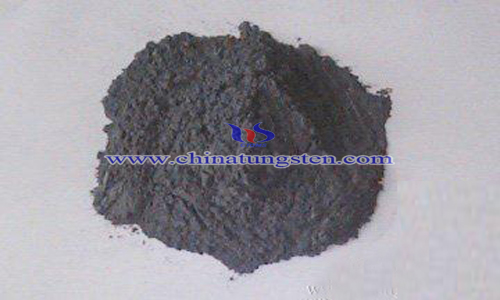Tungsten Disulfide-Carbon Nanocomposites with Thousand-layer Rock Structure
- Details
- Category: Tungsten Information
- Published on Wednesday, 28 August 2019 22:37
Tungsten disulfide (WS2) is considered to be a promising anode material for lithium ion batteries. It is not only cheap and safe, but also has a unique two-dimensional layered structure. The weak van der Waals force links the layers, which is conducive to the rapid diffusion of lithium ions in active materials.

Tungsten disulfide-carbon nanocomposites with 1000-layer rock structure have similar morphology to natural 1000-layer rock structure: nano-carbon materials are located between layered tungsten disulfide layers, tungsten disulfide layers and nano-carbon layers are stacked layer by layer. In this way, the carbon material can not only act as the electron transmission channel, improve the conductivity of the electrode material, but also enlarge the distance between layers and increase the diffusion ability of Li+ between layers. The material exhibits unpredictable excellent electrical properties. The preparation process includes:
1)After fully mixing 0.06 mol tungsten trioxide with 0.03 mol bismuth oxide, it is placed in muffle furnace and burned at 600 C for 48 hours in air atmosphere. It is transferred into four flasks of 500 mL. Hydrochloric acid of 8 mol/L concentration is added to the flask for protonation, centrifugation, washing and drying to obtain H2W2O7.
2)20 mL ethylenediamine (analytical purity) was dissolved in 70 mL cyclohexane solvent. 1.7 g H2W2O7 was added to the above mixed solution, stirred for 120 h, filtered and dried at 60 oC for 72 h to obtain the organic/inorganic hybrid compounds of H2W2O7 intercalated with ethylenediamine.
3)The organic/inorganic hybrid compound H2W2O7 intercalated with ethylenediamine was placed in a tubular heater, heated to 600 ℃ at a heating rate of 7 ℃/min in argon atmosphere, and slowly cooled to room temperature after 2 hours of heat preservation treatment.
4)Tungsten disulfide/carbon nanocomposites with 1000-layer rock structure were prepared by mixing 0.5 g tungsten oxide-carbon composites with 8.0 g thiourea, heating them to 700 ℃ at a heating rate of 7 ℃/min in a tubular furnace and argon atmosphere, and cooling them slowly for 2 h.
Tungsten disulfide-carbon nanocomposites with 1000-layer rock structure are similar to sandwich structure. Carbon is located between the few layers of tungsten disulfide. It can not only act as an electron transmission channel, improve the conductivity of electrode materials, but also expand the interlayer distance and increase the diffusion ability of Li+ between layers. The composite electrode material exhibits high specific capacity, good loop performance and rate performance. The process is simple and the cost of raw materials is low. It is easy to realize industrial production.
- Tungsten Oxide Manufacturer & Supplier, Chinatungsten Online: www.tungsten-oxide.com
- Tungsten News & Prices of China Tungsten Industry Association: www.ctia.com.cn
- Molybdenum News & Price: news.molybdenum.com.cn
- Tel.: 86 592 5129696; Fax: 86 592 5129797; Email: sales@chinatungsten.com



 sales@chinatungsten.com
sales@chinatungsten.com